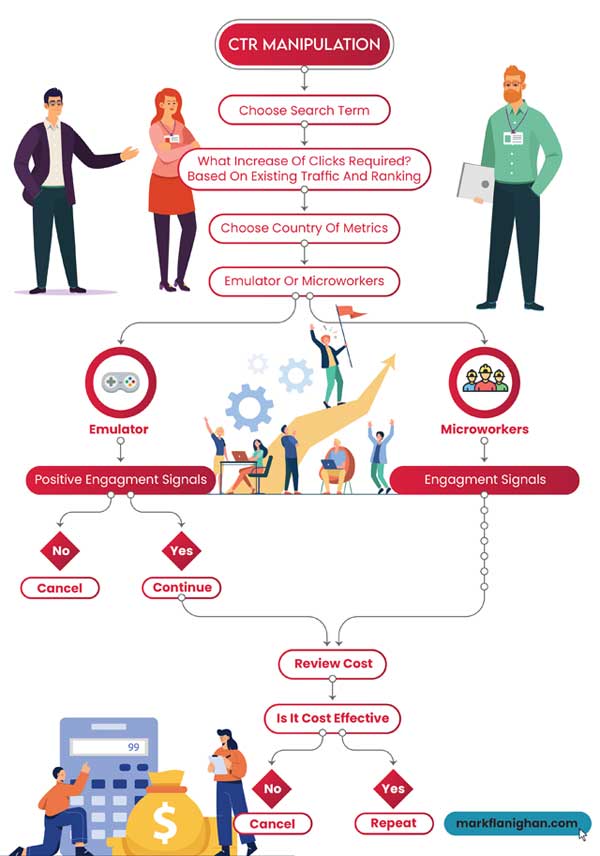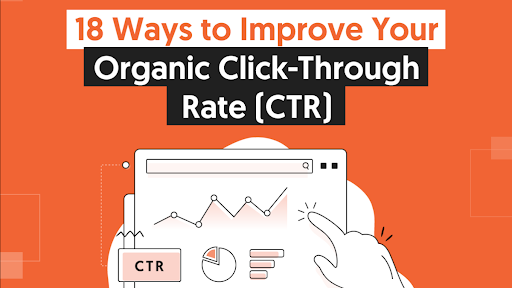Just How to Measure the Impact of CTR Adjustment on Your Advertising
Understanding the subtleties of click-through price (CTR) control in advertising is vital for services aiming for genuine user engagement. By examining vital metrics such as conversion prices and bounce rates, online marketers can uncover potential disparities that might occur from synthetic improvements.
Recognizing CTR Control
Comprehending CTR manipulation is crucial for online marketers looking for to optimize their projects and make certain data integrity. Click-through price (CTR) refers to the proportion of users that click on a particular web link to the total number of users who check out the advertisement or material.
The implications of CTR manipulation prolong past mere data distortion; they can threaten count on in electronic advertising. When organizations rely upon filled with air metrics, they may purchase ineffective campaigns, eventually damaging their roi. Furthermore, systems may penalize advertisers participating in such techniques, leading to additional implications for their marketing efforts.
To efficiently battle CTR adjustment, marketers should develop a comprehensive understanding of their information resources and analytics devices. By using sophisticated monitoring approaches and scrutinizing traffic sources, they can identify irregular patterns and make sure that their performance metrics reflect genuine user engagement - CTR Manipulation Service. This watchfulness is essential for cultivating long-term success in a significantly competitive digital landscape
Key Metrics to Analyze
Effective evaluation of vital metrics is essential for evaluating truth performance of marketing projects and identifying possible CTR control. One key statistics to take into consideration is the Click-Through Price (CTR) itself, which represents the ratio of users that click an advertisement to the overall variety of users that watch it. A sudden spike in CTR might show manipulation, demanding further examination.
Additionally, keeping track of conversion prices is vital. A high CTR with a reduced conversion rate could signal that the clicks are not genuine or that the targeting is misaligned (GMB CTR Manipulation). In a similar way, analyzing bounce rates can give insight into customer interaction; a high bounce rate after a click might suggest that the web traffic is not quality-driven.

Devices for Dimension

In addition, A/B testing tools such as Optimizely or VWO can promote trial and error with various ad variations to establish which elements drive higher CTR. These devices allow marketing professionals to analyze real-time performance and make data-driven adjustments. Social network analytics tools, like Hootsuite or Sprout Social, can likewise contribute in comprehending CTR within social systems, giving understandings right into audience behavior and involvement fads.
Moreover, warm mapping devices, such as Hotjar, can expose exactly how customers communicate with advertisements, aiding to determine where enhancements can be made. Incorporating these devices develops a durable dimension framework, enabling online marketers to discern the impacts of CTR Manipulation Service CTR adjustment properly. Eventually, the appropriate choice of measurement devices is vital for making notified advertising and marketing decisions and enhancing project efficiency.

Evaluating Long-term Impacts
One must think about the long-term effects of CTR manipulation on total advertising performance, as temporary gains can usually mask much deeper effects. Gradually, artificially pumped up click-through prices may result in diminished count on from consumers and online search engine alike. When customers consistently come across deceitful practices, they might come to be hesitant to engage with the brand name, resulting in lower conversion rates in the future.
In addition, algorithm updates from systems such as Google are made to prioritize real engagement over filled with air metrics. Organizations that rely on CTR manipulation may locate themselves punished, leading to a decrease in natural reach and visibility. This can have a cascading impact on brand reputation and customer commitment, ultimately undermining the extremely objectives that the first adjustment looked for to attain.
Furthermore, the data gathered from controlled CTR may misguide marketing experts in their strategy development. Relying upon skewed information can cause illinformed projects that fall short to reverberate with the target audience, leading to wasted resources and missed possibilities. Consequently, it is crucial for marketers to examine the long-lasting ramifications of CTR control and prioritize lasting, moral involvement methods for lasting success.
Moral Considerations in CTR Manipulation
In the realm of electronic marketing, moral factors to consider surrounding CTR control are paramount. While the need to enhance click-through prices (CTR) can lead to short-term gains, the prospective lasting consequences on brand name integrity and customer depend on can not be overlooked.
Additionally, moral issues reach compliance with guidelines such as the Federal Profession Commission (FTC) standards, which mandate openness in advertising. Stopping working to comply with these criteria can expose organizations to lawful ramifications and damage their reputation. Marketers must think about the effects of their methods on individual experience and the wider sector landscape.
Additionally, the rise of expert system and automation in marketing provides additional moral dilemmas. The potential for algorithmic predisposition or the exploitation of customer data questions regarding liability and justness. Inevitably, moral marketing techniques ought to prioritize transparency, honesty, and respect for the consumer, promoting long-lasting relationships that go beyond plain metrics like CTR. Stabilizing performance with principles is necessary for lasting success in the electronic industry.
Verdict
In final thought, gauging the effect of CTR adjustment on advertising requires a detailed analysis of crucial metrics, including click-through rates, conversion rates, and bounce rates. Inevitably, a data-driven approach makes sure that marketing methods are reliable and aligned with authentic customer interactions.
Recognizing the subtleties of click-through rate (CTR) control in advertising and marketing is necessary for businesses aiming for real user interaction.Reliable analysis of crucial metrics is critical for assessing the real efficiency of marketing campaigns and identifying potential CTR control.One have to consider the long-term impacts of CTR adjustment on total marketing performance, as short-term gains can commonly mask much deeper implications.In the realm of digital advertising, moral factors to consider bordering CTR manipulation are extremely important.In conclusion, measuring the influence of CTR adjustment on marketing requires a comprehensive analysis of essential metrics, consisting of click-through prices, conversion prices, and bounce prices.
Comments on “Discover Our Expert CTR Manipulation Service for Improved Visibility”